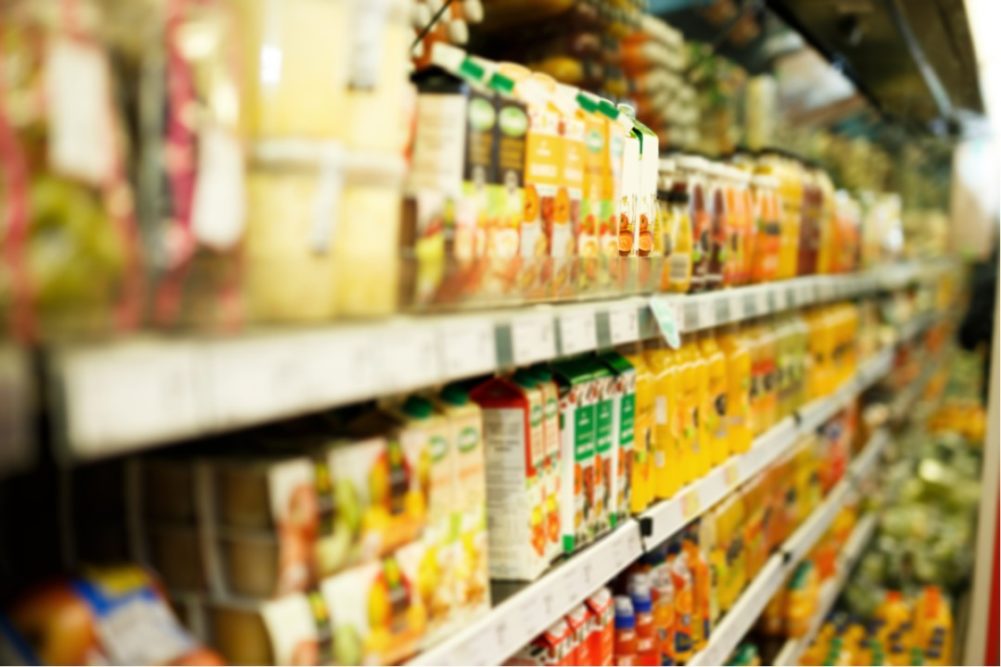ARLINGTON, VA. — Food retailers are facing a host of pressures when it comes to keeping shelves stocked and prices low. Already emerging as a point of pressure before the pandemic, trucking capacity remains a major issue.
The industry currently is facing a record shortage of 80,000 drivers, per the American Trucking Association. Labor is another challenge, with employment at food and beverage stores falling by 7,500 in January, continuing a decline that began in December, according to the United States Bureau of Labor Statistics (BLS).
Adding to the pressure are changing consumer behaviors. Demand has evolved throughout the pandemic from short-term stocking up to longer-term lifestyle changes that have seen consumers continue to cook and eat at home more. This growth in demand has led to higher revenues for food retailers, but persistent cost increases and supply chain challenges have resulted in some products not being available in stores.
Data from NielsenIQ show food and beverage retailers missed out on $82 billion in sales from out-of-stock items last year.
“Unfortunately, this lack of availability can be difficult for grocery stores to predict as it's often regional and I would say consistently inconsistent in its prevalence throughout the industry,” said Leslie Sarasin, president and chief executive officer of FMI—The Food Industry Association.
Keeping shelves stocked and prices low has been made more challenging by ongoing inflation. Food-at-home prices jumped 7.4% in 2021, and two-in-three consumers now report feeling the impact of inflation on their grocery bill, according to data from the BLS and FMI.
“As an industry we continue to do everything we possibly can to avoid passing on increased prices to our customers,” Sarasin said. “A major component of that work is intended to alleviate supply chain challenges in the present, while collaborating to future proof our operations so we can cope with anticipated and unforeseen things that happen to us as we move forward.”
Building resiliency
Increasing the flexibility and adaptability of the food supply chain is both the biggest challenge and biggest opportunity for future-proofing operations, said Ricky Volpe, PhD, associate professor of agribusiness at California Polytechnic State University. From production to manufacturing to retail, most agents in the supply chain have sought to reduce uncertainty and transaction costs through long-term contractual agreements.
“Growers, shippers, processors, manufacturers — a lot of these companies and firms became very specialized in the last 15 to 20 years in terms of focusing more on the foodservice side or the retail side,” Volpe said.
This rigidity was thrown into sharp relief early in the pandemic when the foodservice channel saw a surplus of food and unusable labor while the retail channel experienced out-of-stocks and an acute labor shortage.
“The pandemic exposed how difficult it can be to pierce that veil and have food, labor and other inputs move from one marketing channel to the other,” Volpe said. “Moving forward, flexibility and adaptability are going to be really important because we don’t know when the next shock is going to come. It is incumbent on sellers and producers to maintain a rolodex of potential outputs and potential buyers of their product across marketing channels. This will require some involvement from state and local governments when it comes to regulations on how products are used and labeled.”
Technology upgrades and advances in areas like artificial intelligence, machine learning and data analytics are another key area of focus. Players throughout the supply chain are working to better utilize data to automate portions of the decision-making process and allow for better forecasting of potential disruptions.
“The industry is also examining ways to find a more resilient balance between a maximum efficiency just-in-time supply chain model, and a more robust system that relies on slightly more inventory, so that unanticipated bottlenecks at one link in the chain will have less of an impact at other points along the chain,” Sarasin said.
Mitigating food waste
Reimagining the food supply chain necessarily involves tackling food waste. FMI estimates businesses and consumers throw away between 25% and 40% of the food that is grown and processed in the United States each year.
Companies can use data to create achievable food waste reduction goals or develop a composting strategy, according to FMI. Grocery retailers and manufacturers also are collaborating to streamline and standardize wording on package labels — for terms like “sell by” or “best by” — to provide greater clarity regarding the quality and safety of products.
Leveraging fresh departments is another potential strategy for cutting down on waste. Retailers can use produce that otherwise would be tossed out for fruit and vegetable trays, smoothies, baked foods and other fresh-prepared offerings.
“I’d like to see retailers engage in repurposing and reusing foods they receive,” Volpe said. “I’d also like to see more education for consumers, because there’s a lot of variation with food IQ in the United States. In a lot of cases, it’s still lacking around how to purchase, store and prepare foods, especially produce, specialty crops and dairy products.”


